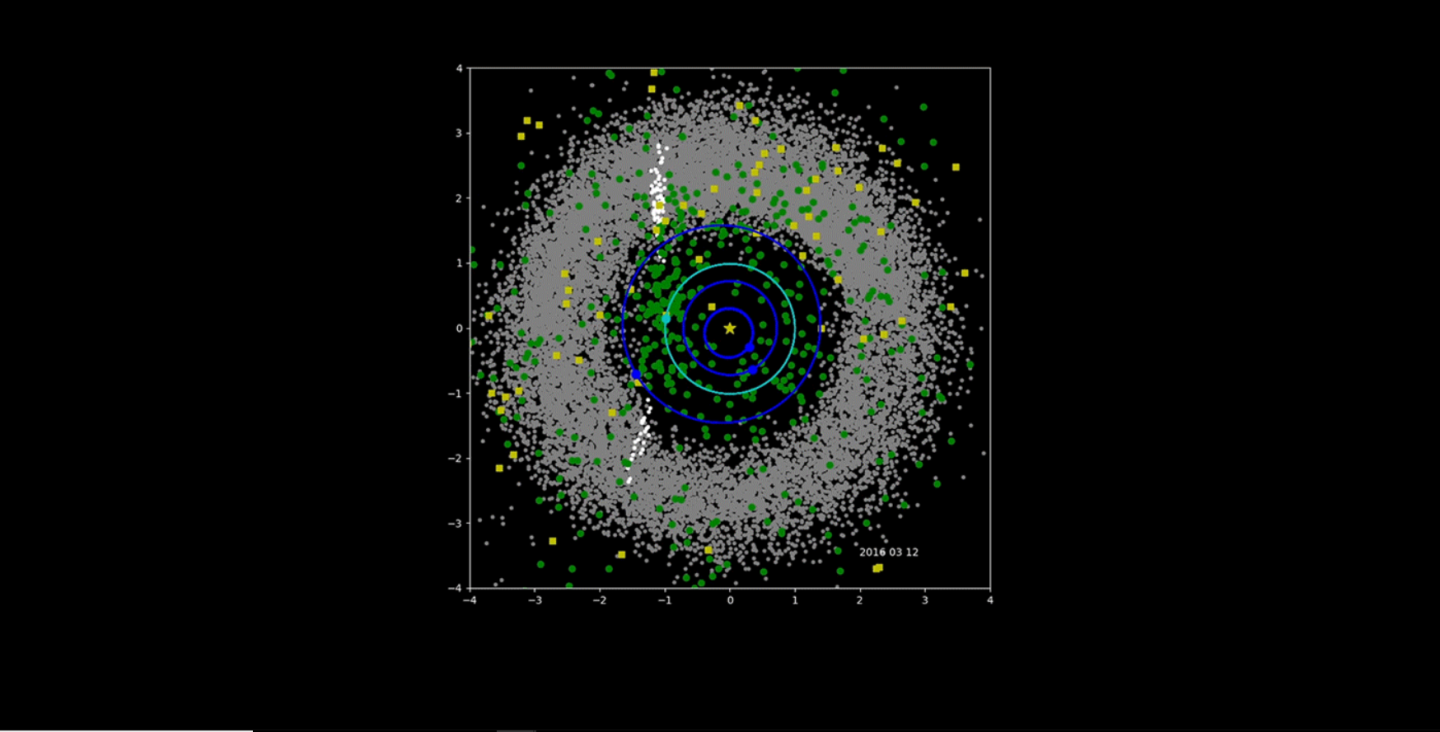NASA has released a video showing the locations and motions of 29,375 asteroids and comets that have been discovered by the agency's Near-Earth Object Wide-Field Infrared Survey Explorer (NEOWISE) spacecraft. The video has been released to coincide with the publishing of the fourth year of NEOWISE observations, during which the telescope identified 10 potentially hazardous near-Earth asteroids.
NEOWISE began its life as the Wide-field Infrared Explorer (WISE) – an infrared orbital telescope launched on December 14, 2009, and tasked with the discovery of distant stars, galaxies, and, closer to home, asteroids.
By early 2011, WISE had scanned the entire sky twice, capturing images of three-quarters of a billion celestial objects. Sadly, at this point, the hydrogen coolant vital to the successful continuation of the primary science mission was running perilously low, and on February 17, 2011, WISE was placed in a state of hibernation.
In late 2013 the transmitters on the dormant telescope were switched on once again, and like a phoenix from the ashes the NEOWISE mission was launched. This time around the telescope's gaze was focused solely on activity occurring within our home solar system, as it sought out and observed the host of comets and asteroids pacing an orbit around the Sun.
An incredible 29,375 solar system objects have been discovered by NEOWISE since its rebranding, including 788 near-Earth objects, and 136 comets.
Not all of these cosmic wanderers are benign in nature. NEOWISE has discovered a number of bodies that pose a significant danger to Earth, which are collectively classified as potentially hazardous asteroids (PHAs). In order to belong to this unsettling group, an asteroid must have an orbit that passes within five million miles of Earth and be large enough to survive the passage through our planet's dense atmosphere.

During the fourth year of its mission, NEOWISE captured over 2.5 million infrared images, leading to the discovery of numerous solar system bodies, including 10 new PHAs.
"NEOWISE continues to expand our catalog and knowledge of these elusive and important objects," comments Amy Mainzer, NEOWISE principal investigator from NASA's Jet Propulsion Laboratory in Pasadena, California. "In total, NEOWISE has now characterized sizes and reflectivities of over 1,300 near-Earth objects since the spacecraft was launched, offering an invaluable resource for understanding the physical properties of this population, and studying what they are made of and where they have come from."
The first four years of observations are now available to the public via the mission archive website. The resource contains over 10.3 million image sets, and a database of more than 76 billion source detections.
The NEOWISE data has been visualized in a new NASA video displaying the location and movement of the many asteroids and comets discovered by the veteran satellite. The orbital lines of Mercury, Venus and Mars are displayed in blue, while Earth's path is shown in teal.
Asteroids that pass relatively close to Earth are represented as green dots, while wandering comets are shown as yellow squares. Other more distant asteroids that predominantly orbit in the main asteroid belt located between Mars and Jupiter, the orbit of which lies beyond the scope of the animation, are shown in grey.
The video highlights the complex orbital ballet unfolding on all scales throughout our solar system, from the passage of massive planets, to wandering comets, and relatively tiny asteroids.
Scroll down to watch the NEOWISE survey visualization.
Source: NASA





